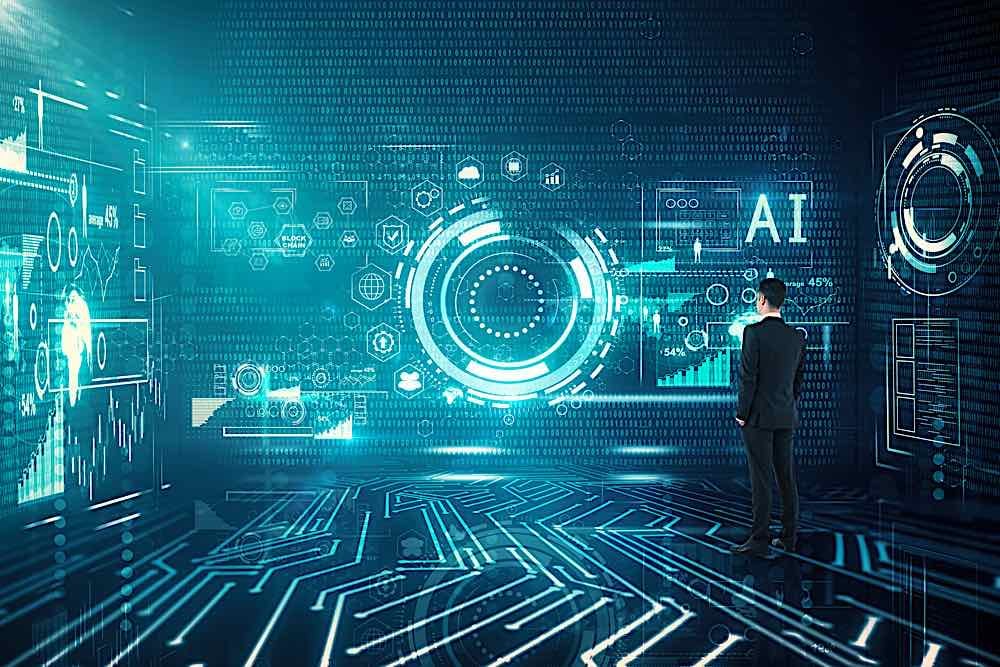
Why HR Managers Should Review ChatGPT and Artificial Intelligence Tools in the Workplace
The advent of artificial intelligence (AI) tools like ChatGPT has dramatically changed the landscape of the modern workplace. As these tools become more prevalent, HR managers must carefully evaluate their use and establish appropriate guidelines to ensure that they are used ethically and responsibly.
A recent survey revealed that nearly one-half of HR leaders are in the process of creating formal ChatGPT guidelines, emphasizing the importance of HR management’s role in shaping AI tool usage in the workplace.
In this comprehensive article, we will delve deeper into the reasons behind the growing popularity of ChatGPT and other AI tools, the concerns HR managers face, and the benefits that these tools can offer when used responsibly.
The Rise of ChatGPT
Launched in November 2022, ChatGPT has experienced rapid growth and adoption, surpassing the 100-million-user mark by January 2023. This AI-powered language model has transformed the way professionals communicate, allowing them to generate human-like text quickly and efficiently. As organizations integrate AI tools like ChatGPT into their daily operations, HR managers should be prepared to address the various concerns and implications of their use.

AI Adoption in the Workplace
Alongside ChatGPT, numerous AI tools have gained traction in the workplace, with 43% of professionals surveyed by Fishbowl[1] reporting that they use AI tools for work-related tasks. These tools, including AI-driven analytics, automation, and decision-making software, are revolutionizing the way businesses operate, leading to increased efficiency and improved outcomes.
The Importance of Establishing Guidelines
As AI tools become more widespread, HR managers must address several concerns that arise from their use. These concerns include:
- Confidentiality: The information shared with AI chatbots may not remain confidential, posing potential risks to employee privacy and data security.
- Reliability: AI-generated content may not always be accurate or reliable, which can lead to misinformation and miscommunication within the organization.
- AI-generated Text Detection: The use of AI-generated content could be detected and analyzed, potentially undermining the credibility of the work produced.
By establishing guidelines for AI tool usage, HR managers can alleviate these concerns and ensure that employees use these tools ethically and responsibly.
Collaborative Approach
To develop comprehensive guidelines for AI tool usage in the workplace, HR managers should collaborate with IT, legal, compliance, and auditing departments. This interdisciplinary approach allows organizations to assess the risks and potential impacts of AI tools thoroughly, ensuring that all relevant aspects are considered when formulating guidelines.
Benefits of ChatGPT and AI Tools in the Workplace
In this section, we will discuss the various advantages that ChatGPT and other AI tools can offer to organizations[2] when used responsibly. From increased efficiency to enhanced communication, these tools have the potential to revolutionize the workplace and drive positive outcomes.
1. Increased Efficiency
AI tools like ChatGPT have the potential to increase efficiency in the workplace by automating routine tasks and streamlining communication. For example, ChatGPT can be used to draft emails, write reports, or generate meeting agendas, freeing up valuable time for employees to focus on higher-level tasks.
2. Improved Decision-Making
AI-driven analytics tools can provide valuable insights, helping organizations make more informed decisions. By analyzing large datasets and identifying trends, AI tools can support decision-making in various areas, such as marketing, finance, and operations.
3. Enhanced Communication
ChatGPT and other AI-powered language models can enhance communication by generating human-like text, making it easier for employees to convey complex ideas or draft professional documents. Additionally, AI-driven translation tools can help bridge language barriers, facilitating communication among teams with diverse linguistic backgrounds.
4. Job Seekers and Recruitment
ChatGPT has proven to be useful for job seekers in creating resumes and cover letters, with 69% of users reporting a higher response rate from potential employers. For HR managers involved in the recruitment process, AI tools can help identify top candidates by analyzing resumes, evaluating skill sets, and predicting job performance.
Creating an AI-Driven Workplace: Best Practices for HR Managers
As the integration of AI tools in the workplace becomes more prevalent, HR managers must take a proactive approach to ensure their responsible and ethical use. In this section, we will explore best practices for HR managers to create an AI-driven workplace[3] that fosters innovation while prioritizing the well-being of employees.
Develop Comprehensive Guidelines
HR managers must create comprehensive guidelines for AI tool usage in the workplace, addressing concerns such as confidentiality, reliability, and AI-generated text detection. These guidelines should be communicated clearly to all employees and updated as necessary to keep up with the rapidly evolving AI landscape.
Provide Employee Training
As AI tools become more prevalent in the workplace, it’s essential for HR managers to provide employees with the necessary training to use these tools effectively and responsibly. This training should cover topics such as AI ethics, data privacy, and best practices for using AI tools in various tasks.
Monitor AI Tool Usage
HR managers should regularly monitor AI tool usage within the organization to ensure that employees adhere to established guidelines and use these tools responsibly. Monitoring can also help identify any issues or areas of concern that may need to be addressed through additional training or updates to guidelines.
Encourage Collaboration and Innovation
HR managers should foster a culture of collaboration and innovation, encouraging employees to explore the potential of AI tools while remaining mindful of their ethical and responsible use. By promoting a collaborative environment, organizations can tap into the full potential of AI tools and drive continuous improvement.
Evaluate the Impact of AI Tools
Regularly evaluating the impact of AI tools on the workplace is crucial for HR managers. This evaluation should consider factors such as employee productivity, job satisfaction, and overall organizational performance. By measuring the impact of AI tools, HR managers can ensure that they continue to provide value to the organization and make necessary adjustments to training programs.
Legal and Ethical Considerations
As organizations integrate AI tools like ChatGPT into the workplace, HR managers must be aware of the legal and ethical considerations[4] that arise from their use. These considerations include:
Data Privacy and Security
Ensuring that sensitive employee data remains confidential and secure when using AI tools is crucial. HR managers should work closely with IT and legal teams to establish data privacy policies and implement security measures that protect employee information.
Fairness and Bias
AI tools can sometimes exhibit biases, which can lead to unfair treatment of certain individuals or groups. HR managers should collaborate with AI developers and data scientists to identify potential sources of bias in AI algorithms and take steps to mitigate them.
Transparency and Accountability
Organizations should strive for transparency and accountability when using AI tools. This includes explaining to employees how AI tools work, their intended use, and any potential risks associated with their usage.
Regulatory Compliance
AI tool usage should comply with relevant labor laws and regulations, such as the General Data Protection Regulation (GDPR) in the European Union. HR managers should work with legal and compliance teams to ensure that AI tool usage aligns with these regulatory requirements.

Preparing the Workforce for an AI-Driven Future
As AI tools continue to gain traction in the workplace, HR managers must play a pivotal role in preparing the workforce for an AI-driven future. This preparation should involve:
Upskilling and Reskilling
As AI tools automate routine tasks, employees may need to acquire new skills to remain relevant in the evolving job market. HR managers should identify skill gaps and implement upskilling and reskilling programs to help employees adapt to the changing workplace.
Emotional Intelligence and Empathy
As AI tools handle more routine tasks, human skills like emotional intelligence and empathy will become increasingly valuable. HR managers should encourage employees to develop these skills to complement AI tool usage effectively.
Promoting a Growth Mindset
Encouraging employees to adopt a growth mindset can help them embrace the changes brought about by AI tools and remain agile in the face of new challenges. HR managers should foster a culture of continuous learning and development to support employees in their growth and adaptation.
Conclusion
As the popularity of ChatGPT and other AI tools continues to grow, HR managers must play an active role in reviewing their use in the workplace and establishing guidelines that promote responsible and ethical usage.
By addressing concerns, collaborating with other departments, and leveraging the benefits of AI tools, organizations can create an AI-driven workplace that fosters innovation and supports the well-being of employees.
SOURCES
[1] One-half of HR leaders evaluating ChatGPT guidelines | Canadian HR Reporter
[2] Unpacking ChatGPT: The Pros and Cons of AI’s Hottest Language Model | IE Insights
[3] AI in HR – How To Make Use of the New Hype in a Compliant Manner – CPO Magazine
[4] Legal and human rights issues of AI: Gaps, challenges and vulnerabilities – ScienceDirect


 Our HR solutions experts can recommend the right mix of HR outsourced services to make your entry into Canada easier.
Our HR solutions experts can recommend the right mix of HR outsourced services to make your entry into Canada easier.  Pivotal Employment Management Services co-hires your workforce, simplifying entry of your business in Canada.
Pivotal Employment Management Services co-hires your workforce, simplifying entry of your business in Canada. 
















Alcohol at the Office Party? Not a Good Mix